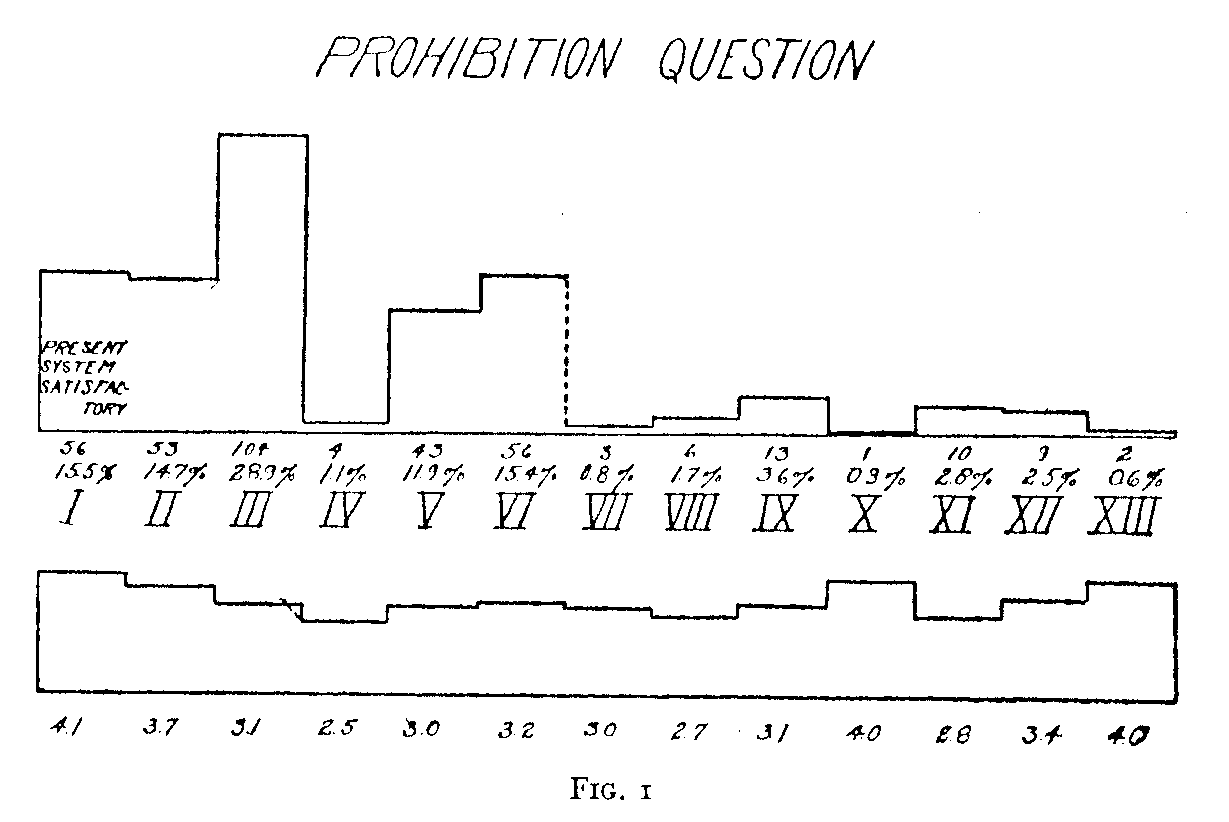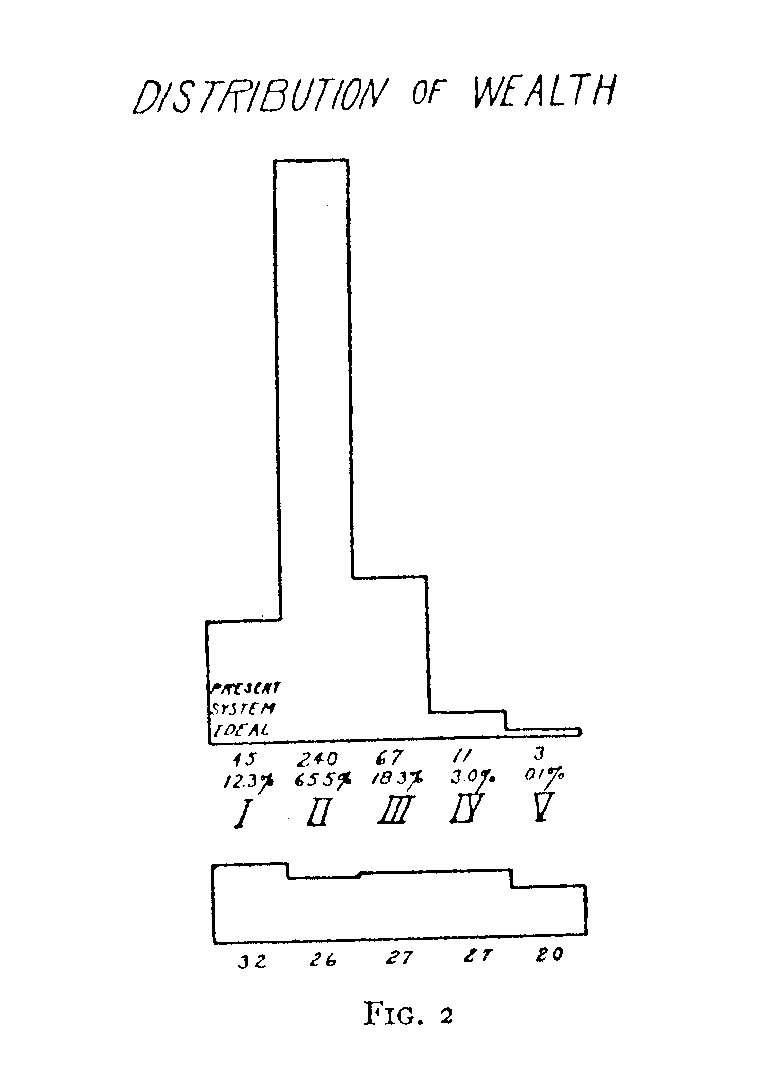A Technique for the Measurement and Analysis of Public Opinion
Floyd Henry Allport and Dale A. Hartman
SYRACUSE UNIVERSITY
I. A METHOD FOR MEASURING PUBLIC OPINION
The purposes of this study were: (I) to develop a scale technique for measuring the distribution of opinion upon public questions; and (2) to inquire into the psychological characteristics of those who adopt certain attitudes upon such questions. Seven current issues of social and political interest were

chosen, and sixty upper-class students were asked to write their views upon them. The resulting opinions were then arranged by the help of six judges in order, from one logical extreme to the other. The seven scales, so constructed, were given out in quiz-section groups to the Freshmen class (College of Liberal Arts, Syracuse University) with instructions to check the one statement in each of the seven issues which most nearly coincided with the subject's view. With each issue a place was provided for checking the degree of certainty and of in-
(242) -tensity of feeling with which the opinion was held. The average number of individuals checking the scales was 367.
The graphic representation of the results for the "prohibition
question" (Figure I) will illustrate both the scale and its use. The steps, which
are rep-resented along the base line, begin with the statement that "the present
prohibition amendment and interpretative statute are satisfactory, and
enforcement should be made more severe." This view is represented in column I,
at the left; and the number of the subjects accepting it, as shown
proportionally by the

height of the column, is 56 (15.5 per cent of the group). At the opposite
end, column XIII, we have the view that "the open saloon should be universally
permitted." It has only two adherents (0.6 per cent of the group). The steps to
the right of column I represent a progressive decrease in the favor with which
the prohibition laws are held. With step 7 we pass over from prohibition to the
side of license, steps 7 to 13 indicating, successively, state option, home
brewing of wines and beers, government stores of wines and beers, local option,
beers and wines in cafés, government stores for all liquors, and the open
saloon.
2. STRENGTH OF CONVICTION UNDERLYING ATYPICAL OPINION
In a flat-shaped graph (see, for example, Figure I), there has been plotted, beneath each step of the scale, the average certainty felt by the persons who
(243) chose the view represented by the step in question. The vertical distance indicates the average certainty in a possible range of from I to 5. The seven certainty curves, in general, rise toward the extremes of the scales. That is, reactionary and radical, strong "pro" and rabid "anti," are alike in the fact that they feel more certain of their opinions than those who lie at a mid-region of the scale. Since both extremes cannot be wholly right, certainty and intensity of conviction do not indicate accuracy, but probably a tendency toward emotional bias.
3. TRAITS OF PERSONALITY UNDERLYING ATYPICAL OPINION ON "DISTRIBUTION OF WEALTH." THE PROBABLE MEANING OF ATYPICALITY
In order to investigate the personal factors, a self-rating study of personality and social status and a reaction study of attitudes were given to the entire group. A number of individual interviews were also conducted. The traits revealed were studied with reference to their incidence upon the opinion curve for the distribution of wealth (Fig. 2). The atypicals at the left end of the scale (column I) believe that a thoroughgoing capitalistic form of wealth distribution is fair and wise. We may call this the reactionary position. The mode, or conservative position (column II), recognizes a problem in the present status but opposes government ownership. The last three columns on the right have been combined into one group tending toward increasing taxation upon wealth, government ownership, confiscation of private fortunes, and abolition of the wage system. These three steps we may speak of as the radical position. The number of cases was as follows: reactionary group, 21; conservative group, 125; radical group, 35.
A significant result of this study is the indication of fundamental resemblances between the holders of opinions at the two logical extremes of the scale. Radical and reactionary lie upon the same side (rather than a-straddle) of the conservative group in self-rating on emotionality, rapidity, and self-reliance, in overestimation of mental ability, in failure to react when asked concerning their attitude upon the sex relation, in lack of agreement with the conventional moral code, in tendency to differ from what they understand to be the political views of their parents, and in intensity of conviction upon political issues. The profiles made from the attitude study show that they share one another's attitudes on diverse questions more fully than the conservative shares the attitudes of either. The atypical individual, in other words, may be reactionary in some things and radical in others. Instead, therefore, of speaking of radical and reactionary personalities, we should, perhaps, recognize as a more fundamental category the atypitality of the individual. What is the psychological nature of atypicality in opinion? We can suggest tentatively that covert emotional conflict as indicated by tests and interviews, may be an important factor.
There were also, however, differences between individuals taking the reactionary and the radical view. The reactionaries exceed the radicals in self-rat-
(244) -ings on self-reliance, in certainty as shown in the opinion curves, and in lack of insight into their abilities and traits. The attitude studies show them to be more scientifically-minded and more snobbish and cynical than the radicals. The radicals, on the other hand, seem more retiring, more "tender-minded" and religious, more aware of their own natures, less self-assertive, more moralistic and meliorative, and more sensitive to the opinions of others. There was a greater proportion of women than men in the radical group, while the reverse relation existed for the reactionary group. In some respects this distinction between reactionary and radical resembles that made by psychoanalysts between the extrovert and the introvert.
4. FURTHER IMPLICATIONS OF THE EXPERIMENT[2]
Two directions in which further investigation is under way are as follows: (I) the analysis of the curve of distribution through the elimination of special groups, such, for example, as those of a certain political party, religion, sex, or economic status, and the country-bred versus city-bred; (2) the effect upon the distribution of opinion produced by propaganda and by various social movements, as contrasted with educational processes.
Another line of investigation relates to the problem of typicality. Are there individuals who are atypical in practically all of their opinions? And are there others who always give the reaction most typical of the group, who are, in other words, "political weather-vanes"? Five of the seven scales were used to determine the composite degree of conformity expressed in the opinions of each individual. For example, subject X is given on each question a score of typicality equal to the percentage of the entire group who fell in their opinion in the same vertical column as X. The sum of these five scores is the typicality index for the individual. According to our distributions the range of typicality index possible is between 4.4 and 153. The actual range shown by our entire group lay between 35 and 153. In order to determine whether this distribution results from chance or from constant causes, the following methods are being used: (I) a search for a correlation between the typicality indexes already obtained and typicality upon other questions; and (2) further psychological testing to discover correlation between typicality index and traits of personality.
In this field significant differences of sex were found. The median typicality index of the men was 88; that of the women was too. (Number of cases: men, 202; women, 161.) ;Among the Fifty-five most typical individuals were found 19.9 per cent of the women and only 11.7 per cent of the men. Among the fifty-three least typical cases were found 20.8 per cent of the men and only 6.8 per cent of the women. These differences may be due in part to sex differences in familiarity with the questions used. According to the scores on the Freshman intelligence test, there is no significant difference in intelligence between the most typical and the least typical groups.